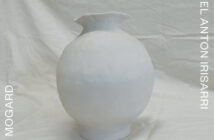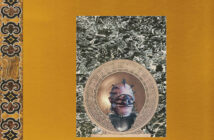
While the term ‘ambient’s was initially used as a description of music that was happy to quietly co-exist with its environment, today the term has become a convenient tag for any music that suggests a sense of space. There is a certain uniformity of sound that accompanies ambient works today and ultimately, as with all genres, some artists are more successful than others in making these environments sound engaging. Ultimately the problem plaguing much ambient music today is that the music often refuses to develop or experiment, steadfastly content with its pleasant static environments. As such, Dead Voices On Air’s latest release Michael and the Angels Fought manages to differentiate itself from its ambient cohorts with a refreshing focus on evolving ambient landscapes that convey a unique sense of narrative.
Dead Voices On Air is, for all intents and purposes, the collaborative ambient project of Mark Spybey, ex-member of industrial group Zoviet-France. Early releases were essentially improvised ambient jam sessions, with varying degrees of success. In recent projects however, Spybey has started to rely more on the post-production process to structure his works, which has led to some interesting and innovative ideas. Spybey describes the work of Dead Voices On Air as “music for the eyes” and while the filmic connotations of his work may be overly romantic in some instances, there is no argument that each track here certainly evokes the impression that it was constructed with a specific space and mood in mind.
Michael and the Angels Fought gets off to a somber start. The cello and electronics opener ‘Shadow’ is really two individual pieces, seeming to conclude at the exact halfway point of the track before carrying on exactly where it left of. While ‘Shadow’ doesn’t really make any huge developments during its running time, the use of the cello is nicely integrated with the surrounding washes of spectral sound, which keeps the track moving forward. The second track ‘Voice’ sees a similar implementation of electronics and voice which creates its own uniquely eerie David Lynch vibe, framing pop lyrics and vocal melodies against an epic expanse of sound, fusing both processing and voice together to create an embedded texture that remains interesting throughout. Dead Voices On Air return to the cello in ‘Pulse’, and it’s here that the album really takes off. Sustained cello melodies interact with ripples and pulses of distortion before fading away to euphoric pads, the sort of musical development that is refreshing to head in an ambient work.
However all of this is a precursor to the final two tracks ‘Moon’ and ‘Sudden’, running for 19 minutes and 15 minutes respectively. ‘Moon’ calls forth textures reminiscent of modern-day Scott Walker, mixing field recordings and noise with manipulated pads of an unknown origin. ‘Sudden’ ups the dark ambient factor yet again, with dark drones framing sound objects that undergo their own perverse metamorphosis for the tracks duration. There is a real sense of narrative at play in these tracks with layers of sound sliding amongst other layers of sound seamlessly to create a sort of scenic development of an almost theatrical nature.
Ultimately Michael and the Angels Fought is the kind of release that reminds us of the power that ambient music can have. Dead Voices On Air infuse their music with its own unique narrative complexity, which makes for engaging listening as music, something often forgotten about by other practitioners of the genre.
Sam Gillies



